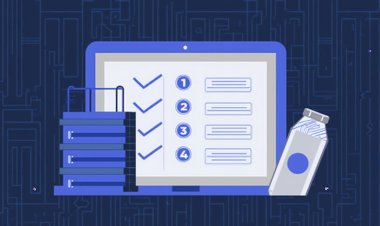API Development: REST vs GraphQL vs gRPC
23 May 2025
APIs are the backbone of modern software architecture, powering everything from mobile apps to distributed systems. In 2025, developers have three leading options for building APIs: REST, GraphQL, and gRPC. Each technology comes with its own strengths, trade-offs, and ideal use cases. This guide compares them side by side to help you choose the best approach for your project.
What is REST?
REST (Representational State Transfer) is a widely adopted architectural style for designing networked applications. It uses standard HTTP methods like GET, POST, PUT, and DELETE and typically returns data in JSON format.
Advantages of REST:
- Simple and easy to implement
- Stateless operations with clear endpoint structure
- Widely supported by all platforms and frameworks
Drawbacks: Over-fetching or under-fetching data is common, especially in complex frontends.
Best for: CRUD-based APIs, mobile backends, and public APIs with broad client support.
What is GraphQL?
GraphQL is a query language and runtime for APIs developed by Facebook. It allows clients to request exactly the data they need and nothing more. All data is accessed through a single endpoint.
Advantages of GraphQL:
- Client-driven queries: no over/under-fetching
- Single endpoint for all resources
- Strongly typed schema with introspection
Drawbacks: More complex to implement; caching and error handling require different strategies.
Best for: Frontend-heavy apps, complex data relationships, or multiple clients (web, mobile, IoT).
What is gRPC?
gRPC (Google Remote Procedure Call) is a high-performance, open-source framework developed by Google. It uses Protocol Buffers (protobuf) for serialization and supports HTTP/2 for transport.
Advantages of gRPC:
- Blazing-fast performance with binary data format
- Bi-directional streaming and built-in code generation
- Ideal for internal microservice communication
Drawbacks: Not as human-readable as REST or GraphQL; limited browser support.
Best for: Microservices, real-time communication, and high-performance APIs in internal systems.
Comparison Table: REST vs GraphQL vs gRPC
| Feature | REST | GraphQL | gRPC |
|---|---|---|---|
| Protocol | HTTP/1.1 | HTTP/1.1 or HTTP/2 | HTTP/2 |
| Data Format | JSON | JSON | Protocol Buffers (binary) |
| Performance | Moderate | Good | High |
| Flexibility | Low | High (client defines) | Moderate |
| Ease of Use | Very Easy | Medium | Complex |
| Streaming Support | Limited (SSE or WebSocket) | Partial (via subscriptions) | Native bi-directional streaming |
| Browser Support | Full | Full | Limited (requires proxy) |
Which API Style Should You Choose?
- Use REST if you want simplicity and universal compatibility.
- Use GraphQL for flexible, data-rich frontends that benefit from precise querying.
- Use gRPC when building high-performance internal APIs between microservices or IoT systems.
Conclusion
In 2025, REST, GraphQL, and gRPC each have distinct roles in the API development ecosystem. REST remains the default choice for many web apps, GraphQL is thriving in frontend-driven development, and gRPC leads when speed and real-time communication matter most. The right decision depends on your team’s needs, infrastructure, and performance goals.


